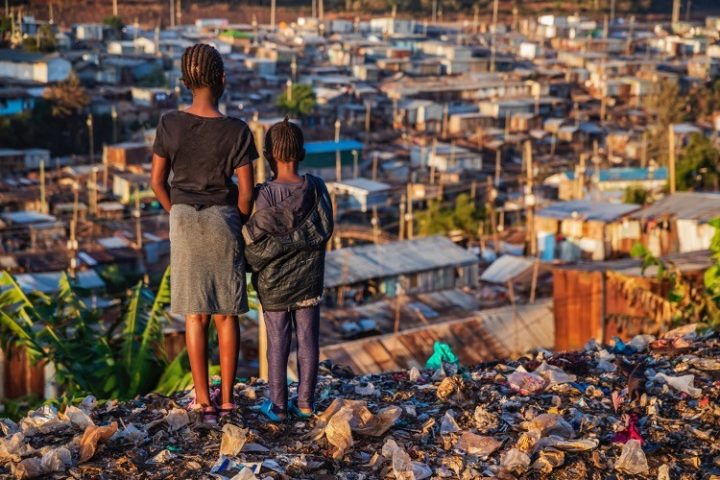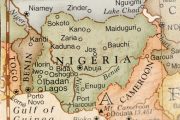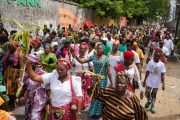
SOUTH AFRICA — On February 28, 2019, Seattle’s Borgen Magazine reported that 9.2 million Africans were the victims of modern slavery — accounting for 23 percent of the global slavery total at that time. The report attributed the success of human trafficking networks in Africa to people seeking to escape extreme poverty; disunity between African countries; minimal interstate cooperation; limited overall compliance with the Trafficking Victims Protection Acts (TVPA); forced marriages of very young, uneducated girls, leaving them susceptible to sexual and domestic violence; the use of child soldiers by both government forces and insurgent groups across Africa; a culturally accepted idea that children should be sent away for a while to earn money for their parents; and the overall ignorance of police authorities regarding the full scope of human trafficking.
In July of 2019, the Africa Center for Strategic Studies (ACSS), based in Washington, D.C., reported that at any given time 3.5 million Africans were being trafficked. According to the report, traffickers prey on people in transit such as migrants or physically displaced people, and, contrary to popular belief, victims aren’t exclusively hijacked for the purpose of becoming sex workers — many are trafficked into agriculture, domestic service, or manufacturing. While ACSS reported that 50 percent of victims in Sub-Saharan West Africa were children, the UN Office on Drugs and Crime (UNODC), partnered with Nigeria’s National Agency for the Prohibition of Trafficking in Persons (NAPTIP), released a report in February 2021 that suggested this number has risen to 75 percent as a result of the COVID-19 pandemic.
It would appear that the profound economic hardship resulting from COVID-19 lockdowns led to a devastating increase of human trafficking across the continent. This should come as no surprise when millions of women and children are out of work, out of school, and without social support; in fact, emerging data indicates a “shadow pandemic” of rising violence against women and girls.
Additionally, food insecurity, displacement of people, criminal activity, and even the number of terror attacks have all increased. Evidently, few combatants across Africa heeded UN Secretary-General Antonio Guterres’ appeal for a global ceasefire to allow the world to focus its energies on defeating the coronavirus. In fact, as published by researcher Andrews Atta-Asamoah of Africa’s Institute for Security Studies (ISS Africa),
Both the Al-Qaeda and ISIS terror groups, far from holding back on their attacks in sympathy with the existential crisis facing the world — were inciting their followers to exploit the pandemic by attacking while governments and security forces were distracted in fighting the disease.
Yet Africa’s conflicts aren’t limited to increasingly brazen attacks by Islamist insurgents in Tunisia, Nigeria, Sinai or Mozambique. There’s ethnic violence in South Sudan, the Libyan Civil War, the Somali Civil War, communal conflicts in Nigeria, a civil war in the Central African Republic, and the Northern Mali conflict. Is it any surprise that millions of distraught Africans are doing everything possible to escape their hopeless life situations, often falling prey to merciless organized crime groups in the process?
In a 2020 global overview released by Interpol concerning the impact of the COVID-19 pandemic on human trafficking, Interpol Secretary General Juergen Stock concluded,
We see misinformation being used by human traffickers to convince desperate people to use their services, and at an even higher personal and financial cost because of the increased difficulties in completing a journey due to travel restrictions…. For example, at the end of March 2020, 64 male migrants were found dead, likely from asphyxia, inside a shipping container loaded on the back end of a lorry, while crossing into Mozambique from Malawi.
While traffickers are exploring potentially more dangerous maritime routes around Africa, South Africa remains the key source, transit, and destination for trafficked people because it is the most stable country of the whole continent. South Africa’s online news publication, The South African, reported in September 2020 that local police saw a 37.1-percent increase in kidnapping cases. In addition, with the COVID-19 pandemic intensifying food insecurity, more South African children were orphaned by parents who did not have the requisite nutrition to take with their anti-retroviral drugs for HIV/AIDS. The Humanitarian and Social Research Center’s (INSAMER) 2020 Orphan Report confirmed that AIDS orphans accounted for 63 percent of South Africa’s orphan quota. Tragically, these children stand little chance of escaping human traffickers. Prior to the COVID pandemic, The Bergen Project estimated in 2019 that 1.2 million South African children were being trafficked each year. As alarming as that statistic was, only 20 percent of people trafficked by South Africa are children.
Other African countries considered high risk for kidnapping and human trafficking include Algeria, Angola, Burkina Faso, Cameroon, Central African Republic, Democratic Republic of Congo, Ethiopia, Kenya, Libya, Mali, Niger, Nigeria, Somalia, South Sudan, Sudan, and Uganda.




